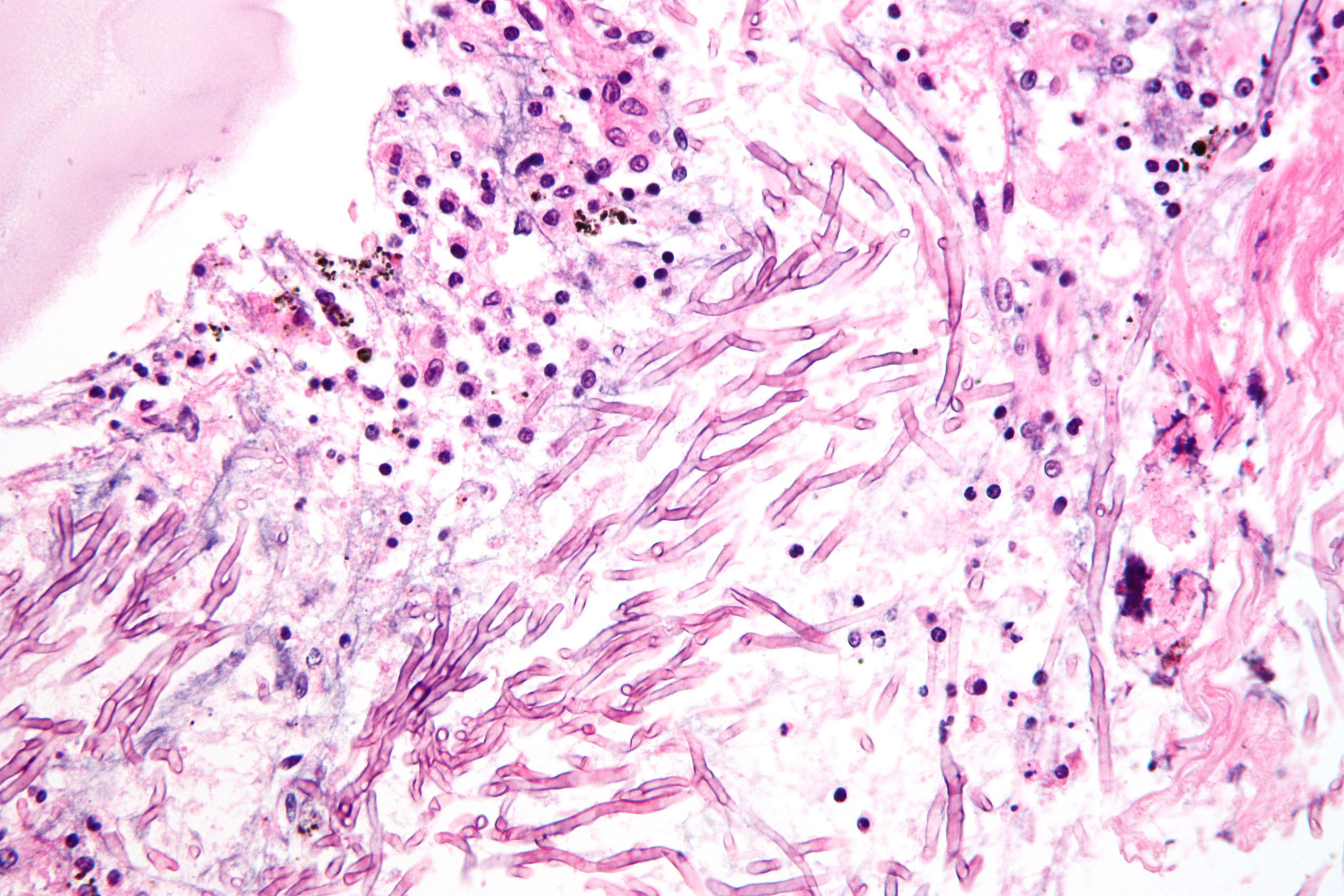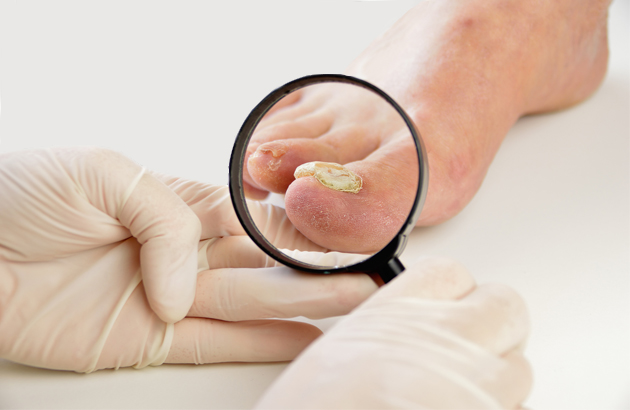Fungal skin infections are common throughout much of the natural world.
In humans, fungal infections occur when an invading fungus takes over an area of the body and starts to spread. Fungal infections can be caused by many different types of fungi, including yeasts.
While rarely serious or life-threatening, fungal infections can be quite itchy and annoying.
This article explains how to recognize different fungal infections and how to treat a fungal infection on the skin.

The 7 Types of Fungal Infections
These types of infections are most likely to develop in damp areas of the body, such as the feet or armpits. Here are some of them:
Tinea Pedis
Or commonly called athlete’s foot, this is probably the most common fungal infection as it is thought that around seven in ten people have tinea pedis at some point in their lives.
It is caused by fungi that grow in the skin between your toes and on the soles of the feet and it can solely be attributed to not properly wiping between the toes after a shower or not changing your socks regularly.
Fungi grow easily here because of the moisture levels when the feet sweat.
The infection causes the skin between the toes to become itchy, flaky, and inflamed in some cases. Blisters are very common and a more severe form of this infection if the infection is not treated adequately.
Onychomycosis
Onychomycosis is the medical name for a fungal infection on the nails. It is caused by a vegetable parasite that enters through the free edge and spreads on the nail.
The toenails are much more likely to be affected by this infection than the fingernails.
Fungal infection of the nail takes a long time to develop and eventually, it may cause your nail to become discolored, rough and brittle.
Having a fungal infection on the nails isn’t painful but can cause problems and discomfort with prolonged standing or exercising.
An unpleasant odor is most likely to be present when having a fungal infection on your nails.
It can be spread easily and there are ways to prevent it by keeping your hands and feet clean and dry, wearing clean and dry socks and changing them often, and wearing shoes in a public toilet or shower.
Despite its rather strange name, ringworm is a fungal infection and has nothing to do with worms. Its name comes from the way it appears as it often causes a ring-shaped rash.
Ringworm infections are very common and can affect different parts of the body.
Ringworm (on the body)
This usually affects parts of the body that are most exposed, such as arms, legs, and trunk. It appears as a red, scaly, ring-shaped rash.
Ringworm is highly contagious and it can be spread with close contact with someone who already has the infection and by touching contaminated items, such as clothing, bedding or tools.
Farm animals, as well as pets like cats and dogs, carry the fungi that cause ringworm. Infected skin such as palms and fingers may have a rough and thickened appearance.
Ringworm (in the groin)
This is commonly known as “jock itch” and it is common in young men but it can equally affect women too.
It manifests as a raised, incredibly itchy, red rash around the groin and it can be caused by sweating and the humid environment between the thighs which create perfect conditions for fungi to thrive.
It can also happen if a person is overweight and often wears tight clothing. It is pretty much the same like ringworm on your hands and feet. It is contagious and can be spread very easily through close contact.
You can prevent it by keeping your groin area clean and dry, changing your underwear and clothing every day, and avoiding tight clothing and fabrics that promote sweating.
Tinea Capitis
Tinea capitis is the medical term for ringworm on the scalp and while you can get this infection at any age, it mostly affects children.
It usually appears in patches on the scalp which may appear scaly and become itchy.
If the infection is not treated on time and is left neglected for a long period it can become inflamed and red, with pustules forming.
This type of infection requires medical attention as hair loss is possible and this can leave bald areas that usually grow back slowly once the infection is successfully treated.
It is highly contagious and it can be spread by sharing a contaminated hairbrush or clothing by someone with the infection.
Pityriasis Versicolor
Pityriasis Versicolor or tinea versicolor is a common fungal infection on the skin. It is caused by a type of yeast called Malassezia, which usually lives on the skin.
It appears as patches of scaly and mildly itchy skin on the back, chest and upper arms.
While it can be pink, brown or red in color, in some cases this type of yeast interferes with the normal pigmentation of the skin which results in small discolored patches.
These patches can be lighter or darker in color than the surrounding skin.
This type of infection is the only fungal infection that isn’t painful, uncomfortable or contagious. Still, it can lead to emotional stress and self-consciousness as it can appear more prominent on the skin after prolonged sun exposure with the affected area remaining lighter and not as tan as the rest of the skin.
What Causes Fungal Infections?

Fungi often grow in warm and moist environments, so a certain lifestyle and body chemistry can increase the risk of fungal infections.
For example, you may experience athlete’s foot if you are a runner or if you sweat a lot.
Wearing sweaty or wet clothes and not changing your clothes regularly is a huge risk factor for skin infections.
A break or cut in the skin may allow microorganisms and bacteria to get deeper into the skin.
Fungal infections are contagious and can be spread from person to person and even from animals to people. Some yeast infections can come from an overgrowth of your own, previously harmless fungi.
Fungal infections can also be spread by touching or sharing contaminated items such as clothes, towels, hairbrushes, and bedding.
Walking barefoot in public showers and pool areas can increase your risk of picking up fungi on your feet.
Fungal infections are not life-threatening conditions and are generally easy to get rid of.
You can still attend to your normal chores and obligations throughout the day, but you need to pay attention to good hygiene to prevent the infection from spreading.
How To Prevent Fungal Infection
Here are some tips on how to reduce your risk of getting a fungal infection and prevent an infection from spreading:
- Dry your skin well after you have a shower
- Dry well between your toes
- Don’t walk barefoot in public areas such as showers, saunas and swimming pools
- Wear loose-fitting clothes made out of breathable material and avoid fabrics that promote sweating
- Do not share towels. Someone may not even know that they have the infection and can very easily spread it.
- Change your shoes often and give them time to dry out
- Properly sterilize or wash home tools such as cutlery, pillows, clothes, socks if someone in your family has a fungal infection.
Treatment of Fungal Skin Infections

Depending on the severity of the infections, you may be able to manage and treat them at home with over-the-counter medicines.
Homecare
After taking a shower or bath, make sure you dry the affected area of your skin thoroughly, especially in the folds of the skin.
Avoid using towels to dry the affected area as bacteria and fungi can be difficult to be removed from dense fabrics unless you boil them.
Opt for disposable tissues to dry between your toes or in the folds of your skin.
It is important to keep your nails short and clean if the fungal infection appears in that area. Please make sure you sterilize the tools you are using to cut your nails or throw them away completely once the infection is treated.
Clean under your nails with hydrogen peroxide or a similar solution from the pharmacy.
Wear breathable clothes and well-fitting shoes and change your socks daily.
Topical treatments
Antifungal treatment is usually recommended to be applied directly onto the infected area. These are known as topical steroids and they come in various forms like creams, lotions, shampoos, and medicated powders.
Most of these are available over-the-counter from a pharmacist so visiting your doctor is most often unnecessary unless you need a prescription.
Commonly used topical antifungal solutions include the medicines clotrimazole, miconazole or econazole which come in a form of cream as well as Canesten solution which is used to treat mild fungal infection on the nails.
If you have a rash that covers a large area of your skin or affects your scalp, you may need to take oral medication. Always get informed on possible side-effects that the tablets may cause by thoroughly consulting with your doctor on all questions you may have.

My name is Simone and I am a certified skin specialist. I created this website to teach my readers how to take great care of their skin and I also like to occasionally share my honest opinions on skincare products I’ve tried. You can learn more about me here.
